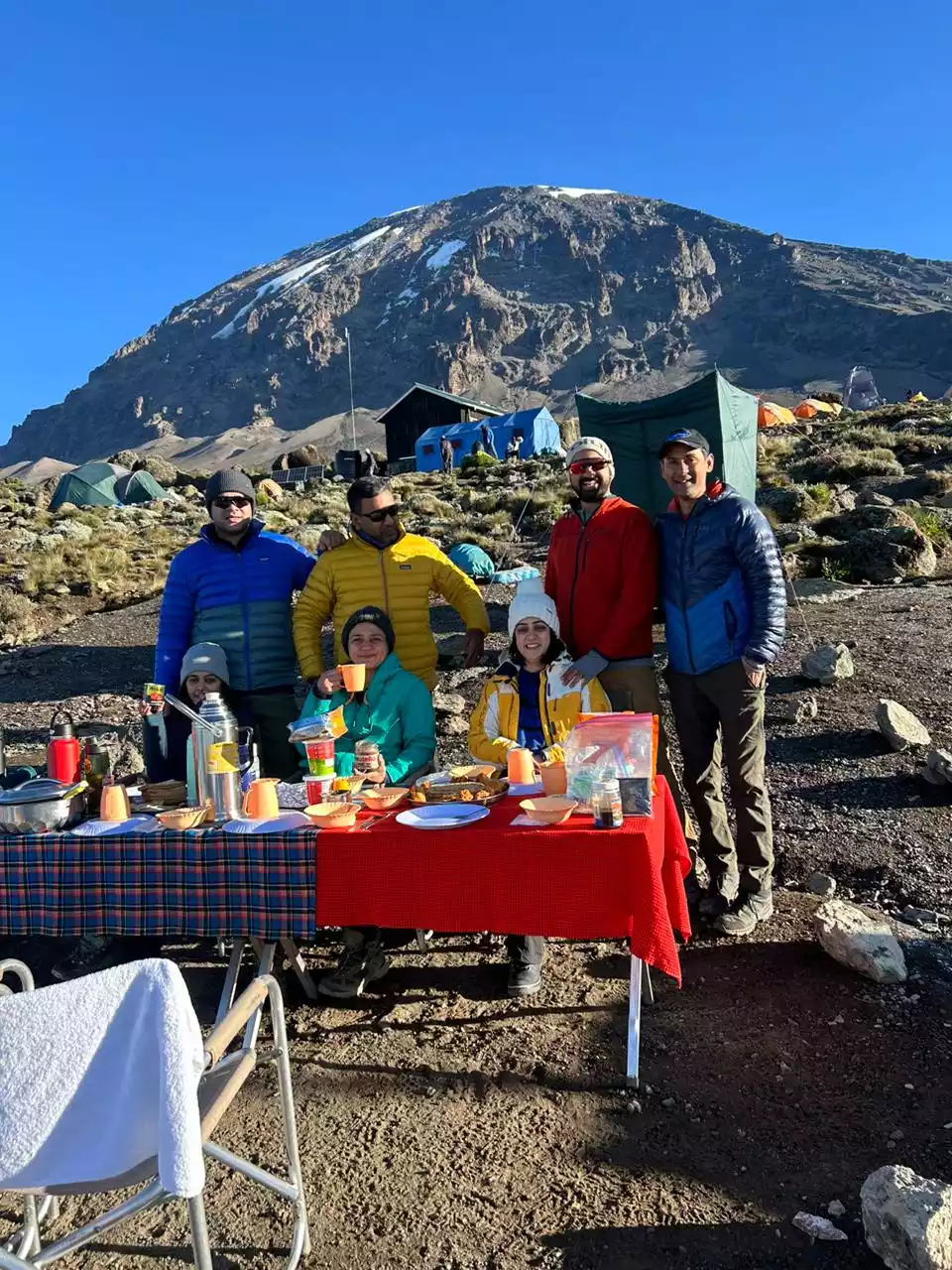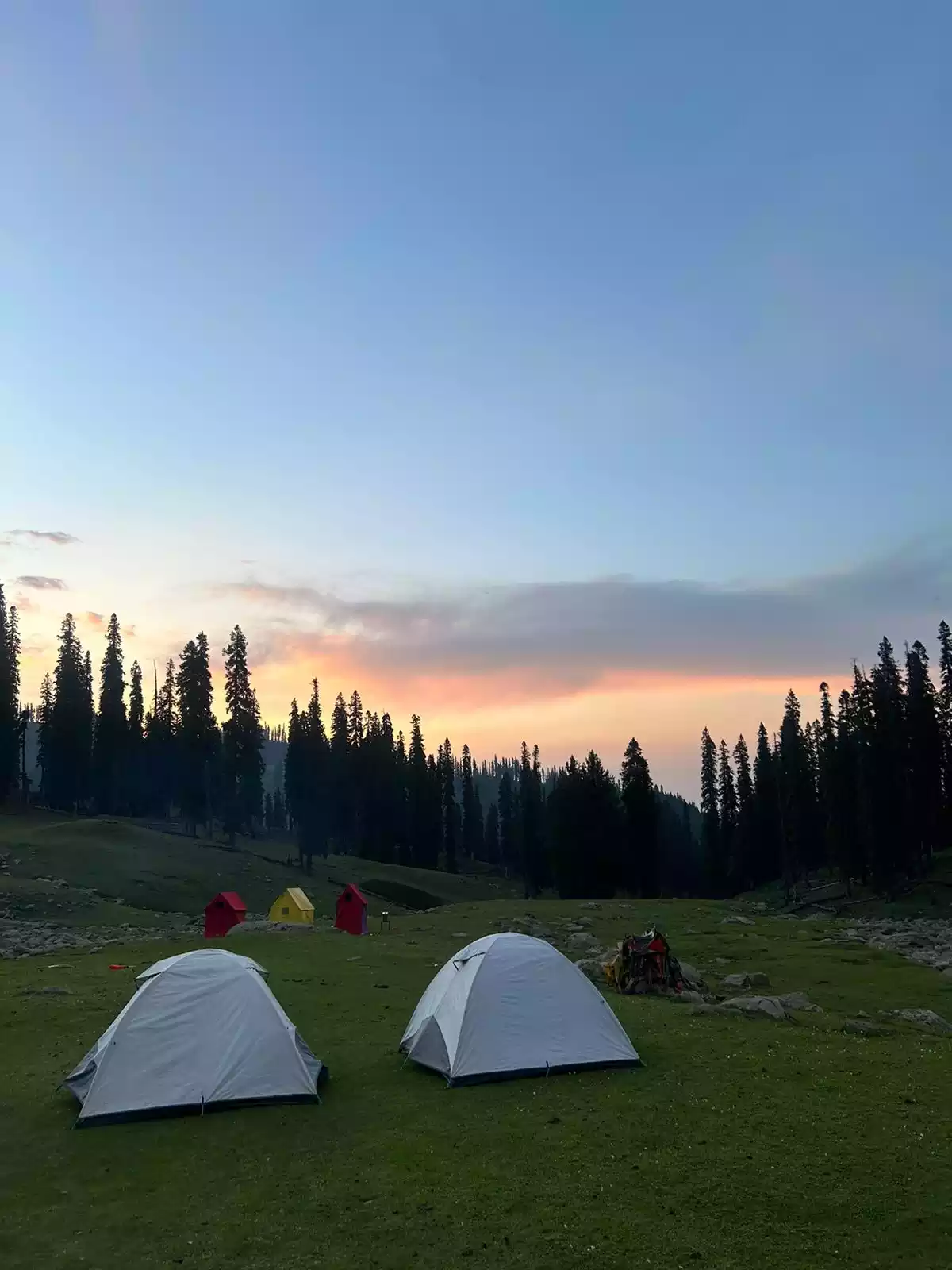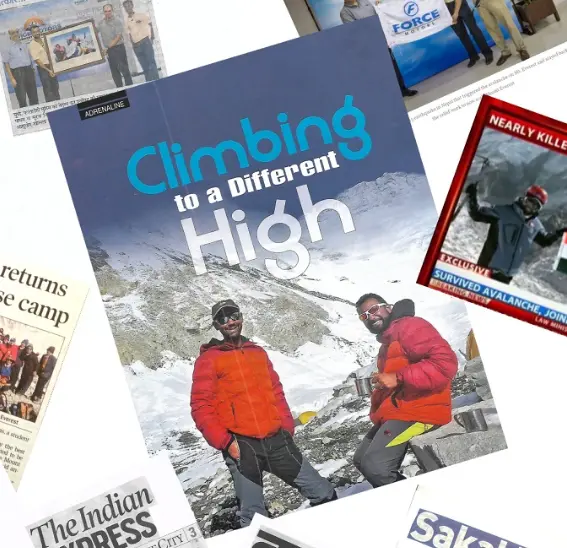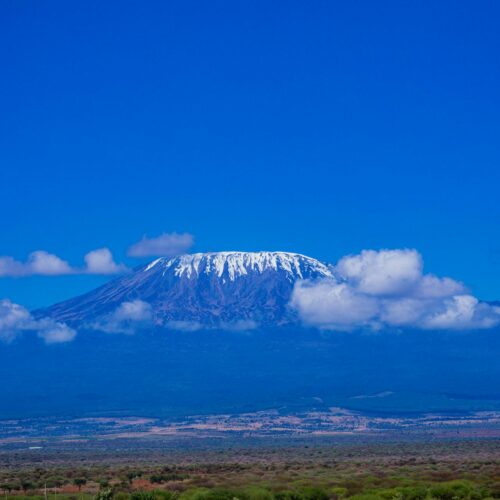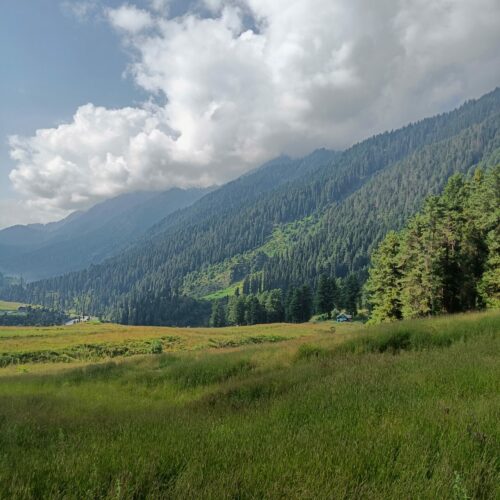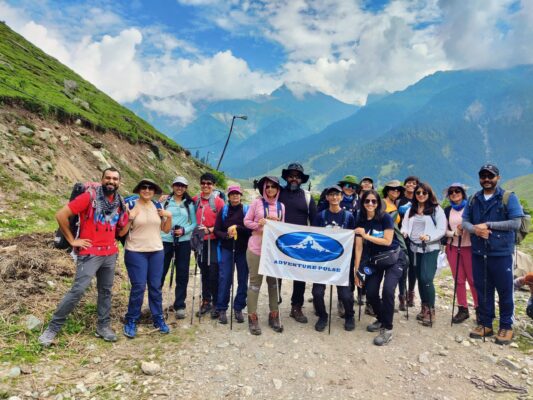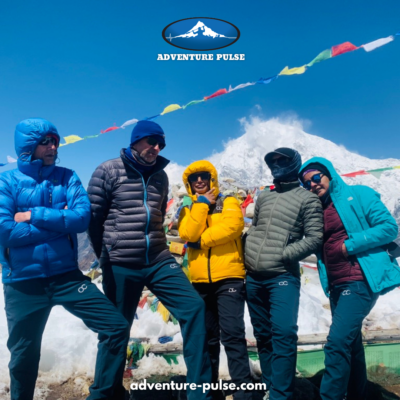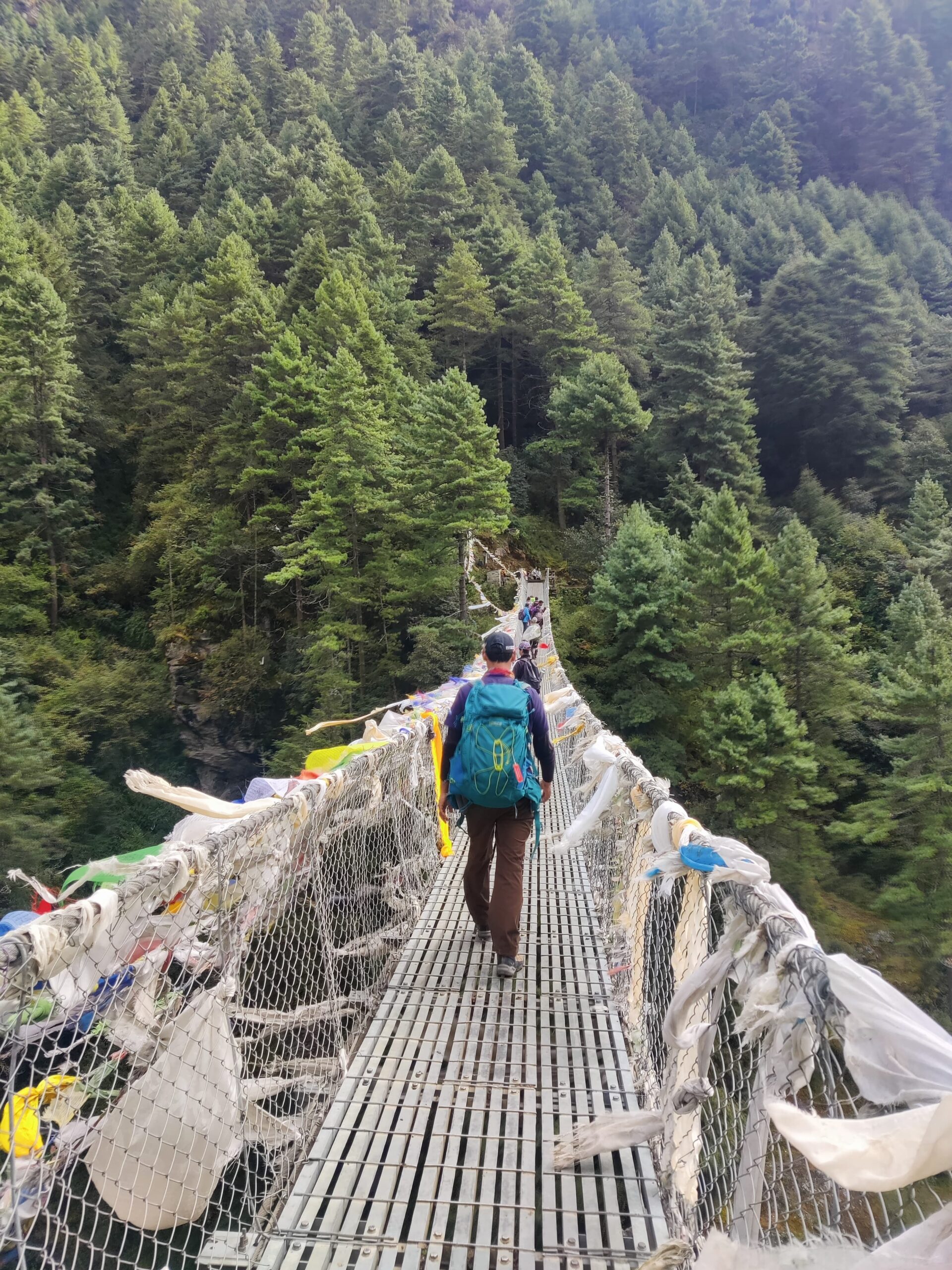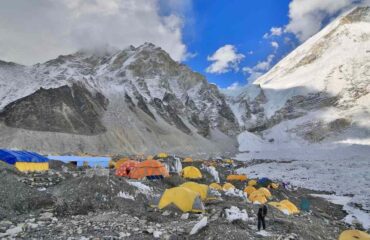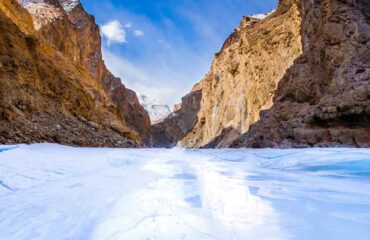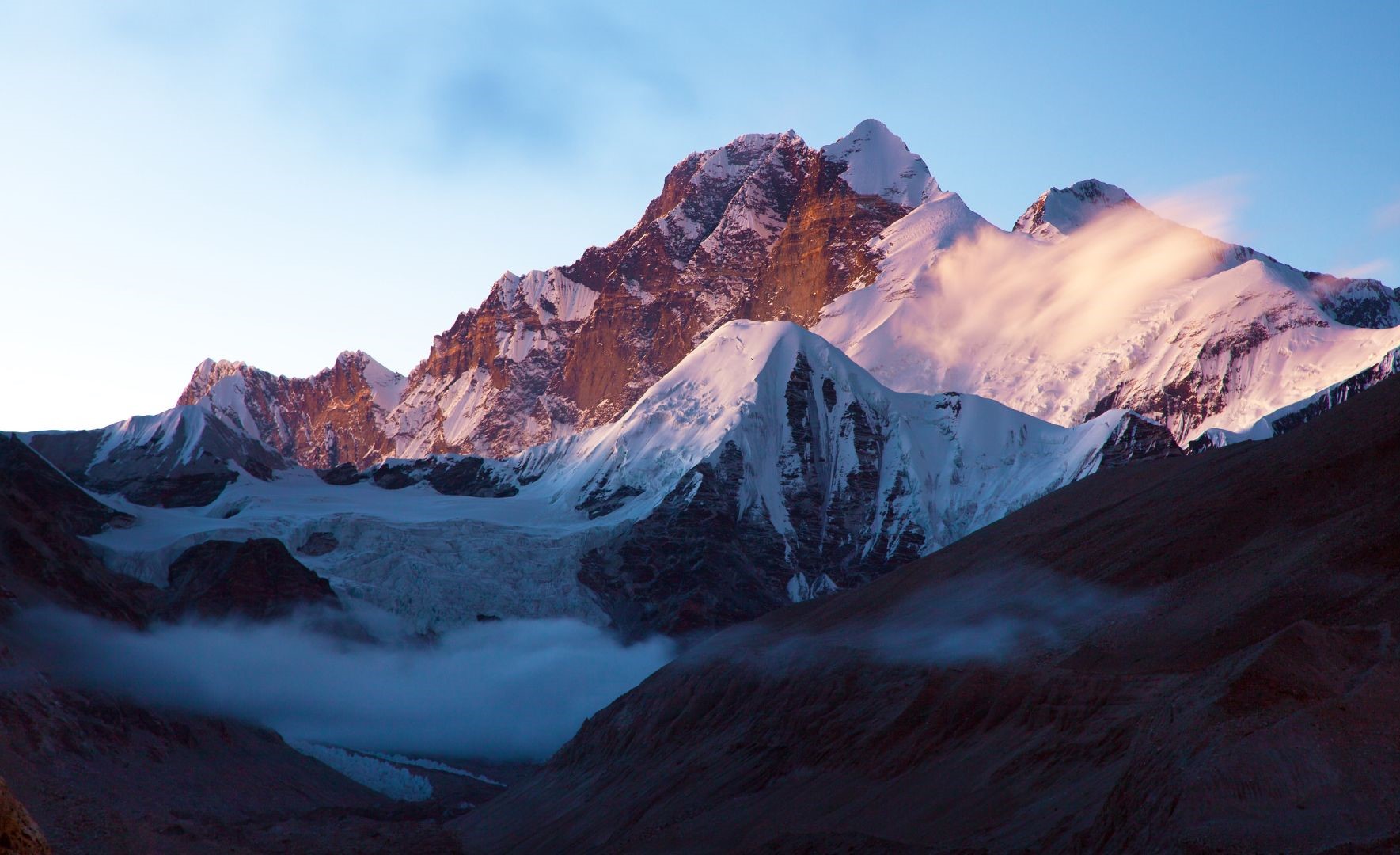
Introduction
Langtang Valley Trek, located in the heart of Nepal, lies within the Langtang National Park. This trek offers an unparalleled journey into the Himalayan wilderness, making it an ideal choice for those seeking both adventure and a combination of breathtaking landscapes and rich cultural experiences. When paired with a climb to Yala Peak, it becomes even more rewarding. Notably, Yala Peak is a nontechnical and accessible expedition that will not only surprise you with the stunning views but also with the awe-inspiring peaks surrounding it.
The trek begins from Syabrubesi, which can be reached by a scenic drive from Kathmandu. Along the way, you will traverse through forests filled with oak, pine, and bamboo, as well as vibrant rhododendrons. The welcoming villages of the Tamang people will greet you with open arms. Additionally, the journey is spiritually enriching, as you encounter landmarks such as stupas, mani walls with Buddhist prayers, and prayer flags, particularly in the village of Kyanjin Gompa. Situated at an altitude of 3,870 meters, this village is home to century-old monasteries and a local cheese factory. From here, Yala Peak’s ascent begins, and it is often noted that anyone can climb it without requiring extensive technical skills. The journey involves crossing rivers, navigating rocky terrain, and climbing slopes covered in snow, all while being surrounded by breathtaking views of Langtang and the Tibetan Himalayas, including Shishapangma.
Moreover, the Langtang Valley trek and Yala Peak are symbolic of resilience. In the aftermath of the 2015 earthquake, the local people demonstrated immense strength in rebuilding their homes and lives. Trekking not only positively impacts the local economy but also contributes to the enduring spirit of the Himalayan communities.
Yala Peak and Region Overview
Yala Peak, a popular trekking peak in the Langtang Himal range, stands at an elevation of 5,520 meters. It is located close to the Tibetan border, offering a thrilling high-altitude adventure. Due to its nontechnical climb, it is an excellent choice for novice climbers.
Geographically, Yala Peak lies within Langtang National Park, a protected Himalayan conservation area, where trekkers are treated to an abundance of biodiversity and stunning landscapes. The trek starts at Kyanjin Gompa, which serves as the base camp, surrounded by glaciated valleys and cascading rivers. As you ascend, the surrounding landscape captivates trekkers, with majestic snow-capped peaks coming into view. From the summit of Yala Peak, trekkers are rewarded with panoramic views of the Langtang range, including Langtang Lirung, Dorje Lakpa, and Gangchempo. Additionally, the Shishapangma peak, the 14th highest peak in the world, is also visible from the summit, entirely within Tibet.
What makes this experience even more unique is the cultural immersion that it offers. The Langtang region is rich in Tibetan-influenced culture, and the traditions of the Tamang and Tibetan people have been preserved for generations, despite the challenges brought on by modern life and the 2015 earthquake.
Start and End Point
Yala Peak is easily accessible from Kathmandu. The journey begins with a drive to Syabrubesi which is start point of the Langtang valley trek as well. From Syabrubesi as the trek starts trekkers and climbers share the same route until the hike at Kyanjin Ri. After summiting Kyanjin Ri climbers head towards the base camp of Yala Peak for the final climb. After summiting, the descent follows the same route back Kyanjin Gompa. The climb needs an additional 2 to 3 days depending on weather. Usually Langtang Valley Trek is a 10 day journey, whereas Yala Peak needs a minimum of 13 days.
Best season to climb and expected temperature
The best seasons to climb Yala Peak are March to May and October to November, as these coincide with the peak trekking season for Langtang valley trek, offering favorable weather conditions. However, climbing in winter (December to February) is also becoming more popular, although the cold temperatures, high winds, and unstable weather make it more challenging. Therefore, climbers with less experience are recommended to attempt the Peak during the prime seasons for better chances of a successful climb.
In Kathmandu temperatures range from 20-25°C during the day. As climbers ascend to higher altitudes, the temperatures drop. At Lama, Kyanjin Gompa and Gyanjin Ri and higher regions, daytime temperatures hover around 8-10°C, and nights can become chilly with temperatures dropping to 5-8°C (sometimes as low as 2-4°C in strong winds).
At Yala Peak Base Camp (4500 to 5000 meters), daytime temperatures are between 0-8°C, and nighttime temperatures range from -5 to -10°C. On the summit, climbers can expect daytime temperatures between -5 to -8°C and as low as -20°C at night due to high winds and wind chill. Thus, climbers should be prepared for extreme cold during their summit attempt.
Terrain and Duration
Yala Peak’s terrain is varied, offering trekkers a chance to experience forests, meadows, rocky paths, and snow-capped peaks. The trek provides an opportunity not only to explore the natural beauty but also to learn about the local culture.
The journey begins in the forests of rhododendrons, bamboo, pine, and oak trees. As you ascend past 3,000 meters, the landscape changes to vast meadows and alpine grasslands, where you can encounter grazing yaks and traditional stone houses. The path becomes rockier as you near Kyanjin Gompa and the Yala Peak Base Camp. These rocky, uneven trails require careful footing, and the increasing altitude makes the terrain physically demanding.
Once you reach the base camp, the ascent to Yala Peak involves snow-covered terrain and icy patches. This requires the use of crampons, ropes, and ice axes for stability and safety.
The trek generally lasts 7 to 8 days, covering the Langtang Valley from Syabrubesi to Kyanjin Gompa. The Yala Peak climb adds 2 to 3 more days to your journey. Summit day typically starts early, around 2 to 3 AM, to ensure you reach the summit before sunrise. The climb to the top and descent to the base camp can take 8 to 10 hours.
Communication during the Expedition
While there is internet access in most tea houses along the trekking route, it is often slow and unreliable due to weather conditions and limited bandwidth. Nevertheless, climbers can expect to pay anywhere from 500 to 1500 Nepali Rupees for a 24-hour internet connection. For better communication, many climbers buy a local SIM card in Thamel, which works in many areas of the trek. However, at Yala Peak Base Camp and summit, there is no network coverage, and communication becomes limited.
Accommodation on the way
Upon arrival in Kathmandu, you will spend your first day at a hotel in Thamel. From Day 2 onwards we enter Langtang Valley, and trek through the Langtang National Park. Throughout the Trek, you’ll stay in tea houses, mountain lodges built for trekkers. These tea houses vary in size and are operated by local families who migrate to higher altitudes during trekking season. Rooms typically feature twin beds with mattresses, pillows, and blankets, and access to common bathrooms.
The tea houses also have fully functional kitchens that prepare fresh meals. The dining areas are equipped with tables, chairs, and a central Bukhari to keep you warm and cozy. The hospitality of the Nepali people enhances the entire trekking experience, making it unforgettable. At the Base Camp of the Peak, we will be staying in a camping set up. With sleeping tents, toilet tents and the dining and kitchen tent, we set up camp for our stay before hitting the summit.
Challenges or Difficulties Involved in the Climb
Despite being a rewarding experience, the Yala Peak climb comes with its challenges. Some preparation and awareness are crucial to ensure a safe ascent.
- Altitude Sickness : The primary challenge is the high altitude. As the peak reaches 5,520 meters, altitude sickness can pose a serious risk. Early symptoms, such as headaches, nausea, dizziness, and fatigue, should be monitored closely. It is essential to address these symptoms immediately and notify your guide. If left unaddressed, these symptoms may worsen into more severe conditions like HAPE (High Altitude Pulmonary Edema) or HACE (High Altitude Cerebral Edema).
- Fortunately, the trek allows for gradual acclimatization, and resting at Kyanjin Gompa provides an excellent opportunity for the body to adjust to the lower oxygen levels. Staying hydrated and maintaining a steady pace will also help reduce the risks associated with altitude sickness.
- Weather conditions : Weather in mountainous regions is highly unpredictable. Sudden snowstorms, strong winds, and rapidly dropping temperatures can make navigation difficult and increase the risks of hypothermia and frostbite. It is, therefore, essential to be well-prepared with proper clothing and gear. The best time for the trek is during the spring (March to May) and autumn (September to November) seasons, when temperatures are moderate, although nights can still be cold. Always check the weather forecast and consult with your guides to ensure you’re adequately prepared for these conditions.
- Technical aspects : While Yala Peak is a non-technical climb, some sections, especially near the summit, require basic mountaineering skills. After snowfalls, icy patches can form, so it is essential to know how to navigate rocky terrain and snowfields. The use of crampons, ropes, and ice axes is often necessary to ensure safety and stability. If you are inexperienced in these techniques, it is advisable to undergo training or hire a skilled guide to assist you.
- Fitness Level : In addition, physical fitness is crucial for a successful ascent. The Langtang Valley trek includes long days of walking on rugged terrain, with significant altitude gains. Summit day is especially challenging, requiring 8 to 10 hours of continuous ascent. Therefore, it’s essential to prepare your body with a fitness routine that includes cardiovascular exercises, yoga, and hiking with a loaded backpack.
- Mental Preparation : Along with physical fitness, mental preparation plays a key role in a successful ascent. Staying positive, managing fatigue, and overcoming moments of isolation can be difficult. However, the breathtaking views of the peaks and surrounding landscapes can serve as motivation during challenging moments.
What Kind of Physical Activities Can Help?
Preparing for Yala Peak involves a well-rounded fitness routine that builds strength, stamina, and mental toughness. The climb demands both physical and mental endurance, and it’s essential to prepare your body to carry a load while adjusting to lower oxygen levels.
Cardio exercises, such as running or cycling, are vital for building stamina and endurance. Aim for 5 to 10 kilometers of running daily or longer cycling sessions to strengthen your cardiovascular system. Swimming is another excellent exercise to build leg strength and improve endurance.
Strengthening your lower body is crucial, as the climb includes steep sections. Exercises such as squats, lunges, and step-ups will target your thighs, hamstrings, and calves. Core strengthening exercises, like planks, mountain climbers, and twists, will improve balance and stability, which are essential for navigating challenging terrain.
It is also helpful to practice regular hiking with a weighted backpack. Start with lighter weights, such as 5 kilograms, and gradually increase to 10 kilograms as your fitness improves. Practicing hikes on uneven or steep terrain will boost your confidence and ensure that you’re prepared for the conditions of the Yala Peak climb.
Lastly, altitude-specific breathing exercises and yoga poses will enhance oxygen efficiency. At high altitudes, the lower oxygen levels can make breathing more difficult, so practicing breath control techniques, such as pranayama, will help reduce the risks of altitude sickness.
Can a First-Timer Summit Yala Peak?
Absolutely! With the right preparation, physical fitness, and guidance, even a first-timer can summit Yala Peak. As a non-technical climb, it is a perfect introduction to Himalayan mountaineering. For those looking to experience the beauty of the Himalayas without needing advanced mountaineering skills, Yala Peak offers an unforgettable adventure.
With appropriate physical preparation, including cardio, strength training, and hiking with a loaded backpack, first-timers can successfully summit. Working with a professional guide ensures that you follow the correct acclimatization protocols, and their support will be invaluable throughout the trek. The thrill of summiting Yala Peak is a reward that you will cherish for a lifetime.
Chances of Summit?
The chances of successfully summiting Yala Peak are relatively high, especially for those who follow proper acclimatization protocols. The gradual ascent through Langtang Valley allows your body to adjust to higher altitudes, and resting at Kyanjin Gompa provides ample time to rest before the final push.
Weather conditions are a crucial factor, so trekkers should be prepared for the unpredictable Himalayan weather. Spring and autumn are the best seasons to summit, offering clearer skies and more moderate temperatures. Ensure that summit day is planned during a weather window to maximize safety and visibility.
Physical and mental preparation are key to success. Stamina, strength, and an understanding of altitude sickness are essential. Basic mountaineering skills, such as using crampons and ice axes, will help you navigate the icy sections of the climb. With proper training and guidance, Yala Peak is achievable for most trekkers.
Thrill of Accomplishment at Yala Peak
Climbing Yala Peak is not just a physical achievement; it’s an emotional and spiritual journey. The sense of accomplishment upon reaching the summit is unparalleled. Overcoming challenges like altitude sickness and mental fatigue gives you a profound appreciation for your determination and resilience.
The stunning panoramic views from the summit, including Langtang Lirung and Shishapangma, will take your breath away. The sunrise or sunset, lighting up the peaks in golden hues, adds to the sense of awe. The experience of reaching the summit also builds resilience and teaches patience, adaptability, and perseverance.
Reaching Yala Peak creates a lasting bond with the region, its people, and its culture, filling you with memories that will stay with you for a lifetime.
Things to Remember on the Climb
To ensure a safe and thrilling adventure, it’s essential to remember a few key things:
- Pack the right gear and equipment. Be sure to wear thermals, insulated jackets, gloves, and waterproof boots with good ankle support. Crampons, ice axes, and ropes might be necessary in some sections.
- Hydration and proper nutrition are crucial for stamina. Carry water and snacks like energy bars, chocolates, and dried fruits to fuel your body. Make sure your meals are rich in carbohydrates and proteins.
- Stay positive and pace yourself. Follow your guide’s advice and remain cautious on icy terrain.
- Respect the local culture and practice responsible photography. Always ask for permission before taking photos of local people, monasteries, or sacred sites.
- Follow the Leave No Trace policy. Carry out all your trash and minimize your environmental footprint.
What Operators Should You Choose for the Climb?
Choosing the right operator is crucial to ensuring a successful and enjoyable climb. Look for experienced and certified guides who know the Yala Peak route and terrain. Operators who provide quality equipment and prioritize safety will ensure a smooth journey.
Furthermore, choose an operator who offers an itinerary that allows time for proper acclimatization and the ability to adapt to changing weather conditions. Researching operator reviews and seeking recommendations from friends or fellow trekkers will help you find a reliable agency.
In addition to safety, choose an operator committed to sustainable tourism. Supporting local communities and minimizing ecological footprints will enhance your overall experience.
Climbing with Adventure Pulse
Climbing with Adventure Pulse means you will experience a well-organized and safe journey. Our team of experienced and certified guides and porters will support you every step of the way. We prioritize your safety, comfort, and overall experience, ensuring that you receive all the necessary guidance and support throughout your climb.
Adventure Pulse specializes in providing top-notch climbing equipment and expert guidance, ensuring you have the right tools and knowledge to tackle the challenges of Island Peak. Our skilled guides, some of whom have summited Mount Everest multiple times, are well-versed in high-altitude conditions. They will teach you the technical aspects of climbing, the acclimatization process, and how to properly use gear like crampons, ice axes, and ropes, all while prioritizing your safety.
Follow us on Social Media : TripAdvisor | Instagram
Blog Credits – Nabamita Choudhury

